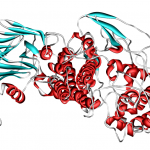 Scientists have discovered the first new form of the Clostridium botulinum bacteria in more than 40 years, according to a new study published in the Journal of Infectious Diseases.
Scientists have discovered the first new form of the Clostridium botulinum bacteria in more than 40 years, according to a new study published in the Journal of Infectious Diseases.
The new bacteria produces a toxin so deadly, journal editors made the unusual move to withhold some of the known information about it to protect against the development of new bioweapons.
“Miniscule amounts of this toxin can cause fatal paralytic disease in people,” William Schaffner, MD, a professor of preventive medicine and infectious diseases at the Vanderbilt University School of Medicine told Weather.com. Dr. Schaffner is also an associate editor of the Journal of Infectious Diseases, though he did not work with this study.
The new study describes the circumstances surrounding the discovery while withholding genetic information, at least until a known treatment is discovered. Other forms of botulism have available treatments, Dr. Schaffner said.
Discussions over whether to withhold information from a scientific paper are rare, but increasing in the “new world,” as bioweapon concerns heighten, Dr. Schnaffner said. “This is not taken lightly because one of the fundamental tenets of science is openness and sharing,” Dr. Schnaffner said. “But in addition to a responsibility to science and fellow scientists, there’s also a responsibility toward the general population of the world.”
The new toxin has the potential to create destruction in almost a “science-fiction fashion,” he said. It has no smell or taste, and a tiny amount is all it takes to paralyze humans or even kill. “This bacteria is thought by some to be the most poisonous substance in the world,” he sad.
One scholarly article on botulinim toxin – not the newly discovered one – noted that a single gram could potentially kill more than a million people, if it were evenly dispersed through the air and inhaled, according to NPR. In fact, its use has already been attempted by the Japanese cult Aum Shinrikyo, which tried to release it in downtown Tokyo in the 1990s, but failed, NPR added.
But Dr. Schaffner said it could be more easily and dangerously spread through a community water supply. “It’s a very stable molecule that can be packaged for transmission in a very stable form,” he said. Substances as toxic as this one are rare, he added.
Source: wunderground.com

















